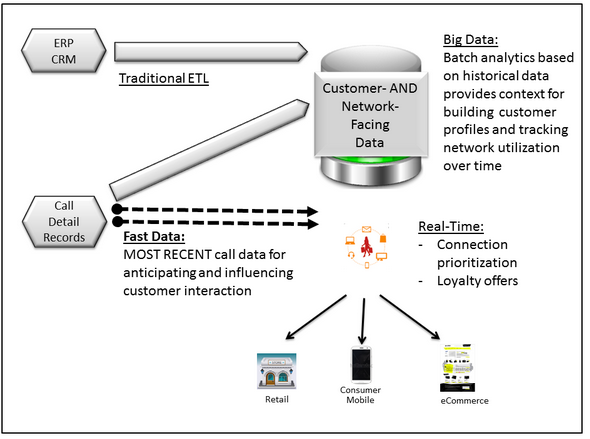 NEWS
NEWS
 NEWS
NEWS
 NEWS
NEWS
A growing list of mayor disruptive forces – mobile, cloud, social media, micro- (and soon nano-) sensors, Internet of Things (IoT), etc. – are creating a tsunami of data that is going to wash over the IT infrastructure stack and drive major change from the silicon up. Flash will replace disk storage wholesale. ARM chips, already dominant in mobile devices, will also dominate sensors in IoT, while new chip architectures such as OpenPower will take on Big Data processing at the high end. Riding on top of this stack will be Systems of Intelligence that derive business value from a combination of traditional and huge new Big Data streams, predicts Wikibon CTO David Floyer.
In “Managing the Data Tsunami with Systems of Intelligence” Floyer looks at the impact of several of these forces of change on the infrastructure. Some of the most dramatic of these are his predictions around the future of computer CPUs and the threat to Intel dominance. Moore’s Law, he writes, is losing steam as technology reaches the limits of circuit miniaturization in silicon. Intel’s answer to the slowing of Moore’s Law has been to increase the number of cores on a chip. But that has its own limits, as expressed in Amdahl’s Law, and Intel has already reached them.
At the same time, the consumer market has taken over from IT as the driver of volume production of silicon. One result is that ARM chips, which were originally designed for low power consumption and on that basis captured most of the mobile market, are now less expensive and almost as fast as Intel’s latest chips. As a result ARM already dominates the sensor marketplace, at this point mostly in the form of consumer devices such as Fitbits and smart watches. This, he says, has major implications for IoT, which is spawning huge numbers of sensor systems.
Also influencing these trends is the market shift toward low-cost apps and away from more-expensive desktop applicaitons. “Even the mainstay of PCs, Microsoft Office, now runs quite well on iOS and Android,” Floyer writes. “The Intel/Microsoft stranglehold on personal computing is fading fast into history.”
Intel will continue to dominate in server hardware designed to run traditional Systems of Record. However, the Big Data tsunami, which will grow very quickly as IoT impacts the infrastructure, demands a new kind of software for Systems of Intelligence.
“In our view, Intel’s current approach will not support intensive data applications such as Systems of Intelligence because of the performance limitations of the core,” Floyer writes. “…the only way to improve the performance of the core is to improve the architecture.”
These new analytic applications, which need to work with very large data volumes – often in near-real-time – are better served by new CPU architectures. “One design is using coherent data between accelerators such as GPUs, faster access to storage and faster access to other nodes in a cluster,” Floyer writes. This will require new software and firmware to support the extension. “Although Intel has recently acquired Altera (FPGA [Field Programmable Gate Array] maker) to help compete in this area, Wikibon believes it will be many years before this can be brought to market.”
Floyer writes that the OpenPower Foundation is the leader in this new architecture and already has silicon in production that combines the Power8 processor with an Nvidea Corp. GPU and Mellanox Technologies Ltd. smart switch. “Early results from Redis and other open-source software indicates a 20x performance gain potential, at one third the total cost,” Floyer writes. In the time since his analysis was published, IBM has announced that FPGA maker Xilinx, Inc., has joined the OpenPower Foundation.
The full article discusses other aspects of the impact of rapidly increasing Big Data and IoT volumes, including how they will drive the adoption of flash storage for active data, software design and the adoption of hybrid cloud architectures.The implementation of Systems of Intelligence will depend upon ensuring that all of the technology prerequisites are in place, especially fast processors, flash storage and highly functional databases, Floyer concludes. “The key is to focus the end result on proven algorithms implemented as part of operational systems.”
THANK YOU